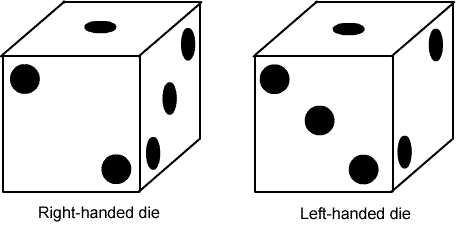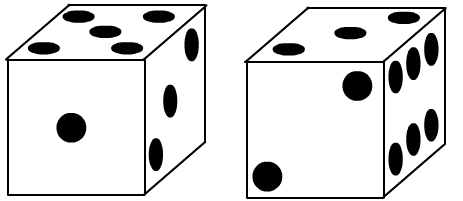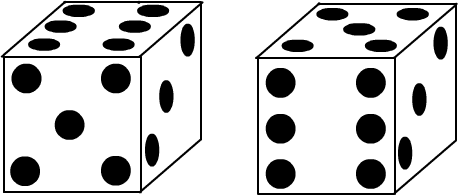Copyright © University of Cambridge. All rights reserved.
'Right or Left?' printed from https://nrich.maths.org/
Show menu
Why do this problem?
This problem encourages children to explore dice in more detail. Even though they may use them frequently, they may not have thought about a dice's properties before. They will be challenged to visualise the dice but making nets of cubes might also be helpful.
Key questions
What do opposite sides of the dice add to?
Can you imagine turning the dice so that you can compare it with the pictures of the right-handed and left-handed dice more easily?
If the $1$ is at the top of the dice and the $2$ facing you, where is the $3$ on the right-handed dice/left-handed dice?
Have a look at the dice in our classroom, are they left-handed or right-handed?
Possible support
If learners are having trouble with the visualisation and you don't have left-handed and right-handed dice, they could stick spots onto cubes to help. Alternatively, print off this sheet which has a net of a right-hand dice on the first page and
a net of a left-handed dice on the second.


